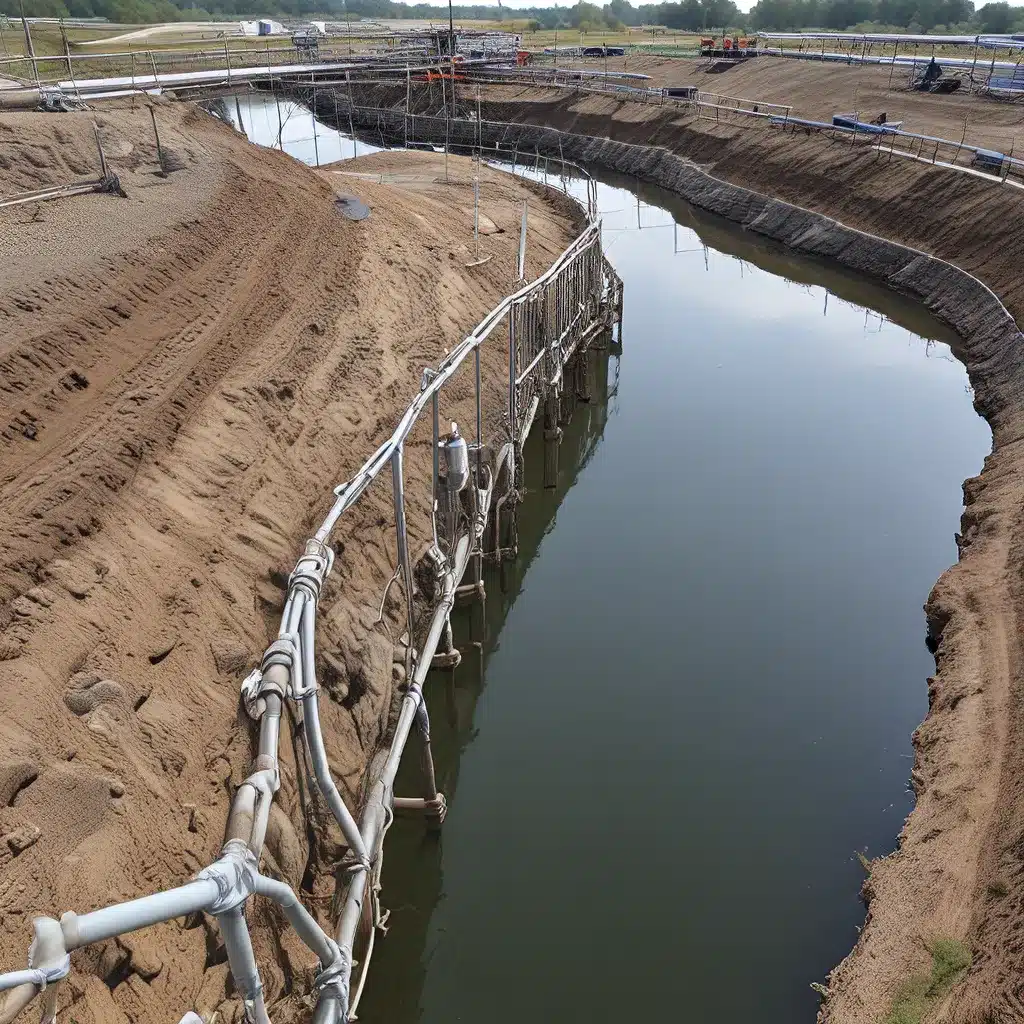
The Treacherous Terrain of Wastewater Permitting
As an environmental engineer, I’ve often found myself navigating the intricate web of stationary source permitting in the wastewater industry. It’s a world of dizzying acronyms, overlapping regulations, and enough jargon to make your head spin. But fear not, my fellow wastewater warriors, for I’m here to guide you through this labyrinth, one step at a time.
Picture this: you’re the proud owner of a wastewater treatment plant, ready to embark on an exciting new expansion project. You’ve dotted your i’s, crossed your t’s, and now you’re faced with a mountain of paperwork – permits, regulations, and more permits. Where do you even begin?
Well, my friends, that’s where I come in. Grab your hardhat and let’s dive into the complex and often confusing world of stationary source permitting in the wastewater industry.
Unraveling the Regulatory Tapestry
The first and most crucial step in navigating the permitting process is understanding the regulatory landscape. It’s a veritable maze of federal, state, and local regulations, each with its own set of requirements and nuances.
Missouri’s air permitting program, for example, is a prime example of the intricate web we’re dealing with. From emissions inspections to hazardous waste management, the list of regulatory hoops to jump through is enough to make even the most seasoned wastewater professional break a sweat.
But fear not, my friends, for with a little bit of digging and a whole lot of patience, we can unravel this tapestry of regulations. The key is to approach it methodically, break it down into manageable chunks, and tackle one requirement at a time.
Mastering the Modeling Minefield
One of the most daunting aspects of stationary source permitting is the air quality modeling that’s required. It’s a complex dance of emission rates, source configurations, and atmospheric conditions, all choreographed to ensure that your wastewater facility doesn’t send the local air quality into a tailspin.
Missouri’s air pollution control program has a wealth of resources to help you navigate this modeling minefield. From screening procedures to refined analyses, they’ve got you covered. But be warned, my friends, this is not for the faint of heart. It’s a delicate balance of art and science, and one misstep could send your permit application spiraling.
As I’ve learned through my own experiences, the key to success in this arena is to enlist the help of a seasoned air quality modeling expert. They’ll be your guide through the labyrinth of emission calculations, dispersion modeling, and regulatory compliance. Trust me, you’ll be glad you have them in your corner.
Navigating the Hazardous Waste Hurdles
But the regulatory challenges don’t stop at air quality. Oh no, my friends, we’ve got hazardous waste to contend with as well. And let me tell you, it’s a veritable minefield of its own.
Missouri’s hazardous and solid waste programs are a prime example of the hoops we have to jump through. From identifying and properly disposing of hazardous materials to ensuring proper storage and transportation, the list of requirements is enough to make even the most seasoned wastewater professional’s head spin.
But don’t worry, we’ve got this. With a little bit of planning, a lot of attention to detail, and a healthy dose of persistence, we can navigate these hazardous waste hurdles and come out the other side with our permits in hand.
The Importance of Partnerships
One of the key things I’ve learned in my years of dealing with stationary source permitting is the importance of partnerships. No one person or organization can possibly know everything there is to know about the complex web of regulations we’re navigating.
That’s why it’s so important to build relationships with regulatory agencies, environmental consultants, and industry peers. They’re the ones who can provide the invaluable insights and guidance we need to stay afloat in this ever-changing landscape.
Inland Waters, Inc., for example, has been a trusted partner of mine for years. They’ve helped me navigate the intricacies of wastewater treatment and environmental compliance, ensuring that my projects not only meet regulatory requirements but also exceed industry standards.
Embracing the Complexity
At the end of the day, navigating the world of stationary source permitting in the wastewater industry is no easy feat. It’s a complex, ever-evolving landscape that requires a delicate balance of technical expertise, regulatory know-how, and good old-fashioned persistence.
But you know what? I wouldn’t have it any other way. This is the kind of challenge that gets my blood pumping and my mind racing. It’s a puzzle to be solved, a maze to be navigated, and a battle to be won.
So, my fellow wastewater warriors, let’s embrace the complexity. Let’s dive headfirst into the regulatory rabbit hole, armed with our knowledge, our partnerships, and our unwavering determination. Together, we’ll conquer the stationary source permitting process and emerge victorious, ready to take on the next challenge that comes our way.
Who’s with me?


